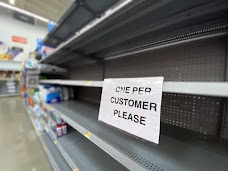So, as I sit
here on this Christmas Day of 2020, just reflecting on life and the past year,
I wanted to send a very warm Merry Christmas to everyone out there. I'm also sharing a few pictures I have taken around the area. It’s been a tough year for many of
us…certainly a crazy year. Still, I’m
grateful for many things. I’m spending
Christmas alone this year. For various
reasons, my family are all off doing different things. And that’s ok. I’ve spent the last two days hunkering down
from the strong cold front. Last night
it got down to about 30 degrees and tonight it’s supposed to get down to about
26 degrees. That’s fairly cold for my
area.
I live in Milton, Florida, which
is in the Panhandle of Florida.
This
type of cold front is not unheard of, but it’s not typical either.
We normally get about 2 or 3 of these cold
fronts through the winter.
We used to
get a lot more of them.
I remember back
years ago it was common for ditches and small inlets to be frozen over.
About 14 years ago we had 4 nights of upper
teens in a row.
On the 3
rd
day, the power grid overloaded, and everyone lost power for about a day or
so.
So, I’m
thinking about what a beautiful area I live in.
From beaches to rivers to creeks, marshes to woodlands and all manner of
creatures. I do wish we would get a
little snow more often, but that’s okay too.
I think we all need to be more thankful for what we do have. We don’t realize how much we have in this
country. I’m not going to wade into
politics, but I will say that if you think this is a bad country, you should
see how
some people live overseas.
We
are very fortunate.
I have an amazing
daughter and a wonderful grandson.
I
don’t get to see them as much as I like, but we both have busy lives.
My daughter is a firefighter, which is no
surprise.
I was a firefighter for many years
and she basically grew up at the firehouse with me.
I had no doubt that she would want to do the
same.
I’ve very proud of her for how
strong she is.
Yes, that's my daughter in the picture to the right-->
At 48, I decided to go
back to school.
This term I took 4
classes which I just finished, but that finished off my Associate’s degree, so
now I can transfer to a Bachelor’s program.
I’m just
reflecting on things here, life and such, but I also am pointing out that we
should be grateful for what we have. It
may never be exactly what we want, but it is still a blessing. I hope everyone has a wonderful
Christmas. If you’re not Christian, then
I also wish you Happy Holidays.
Regardless of religion or non-religion, I hope peace and love finds
you. And regardless of religion or
non-religion, I want to leave you with these words, the words of Our Lady, the
Theotokos (Mother of God):
“My soul
proclaims the greatness of the Lord,
my spirit
rejoices in God my Savior
for he
has looked with favor on his lowly servant.
From this
day all generations will call me blessed:
the
Almighty has done great things for me,
and holy
is his Name.
He has
mercy on those who fear him
in every
generation.
He has
shown the strength of his arm,
he has
scattered the proud in their conceit.
He has
cast down the mighty from their thrones,
and has
lifted up the lowly.
He has
filled the hungry with good things,
and the
rich he has sent away empty.
He has
come to the help of his servant Israel
for he
remembered his promise of mercy,
the
promise he made to our fathers,
to Abraham
and his children forever.”
I absolutely
love these words. It’s called the
Magnificat. My friends, I hope the Most
High brings you peace. And my final
words to you on this cold Christmas night:
We adore
you, O Christ, and we praise you
Because, by Your
Holy Cross, you have redeemed the world.
Our Lady,
Seat of Wisdom…Pray for us
St.
Joseph…Pray for us
St.
Francis…Pray for us



























